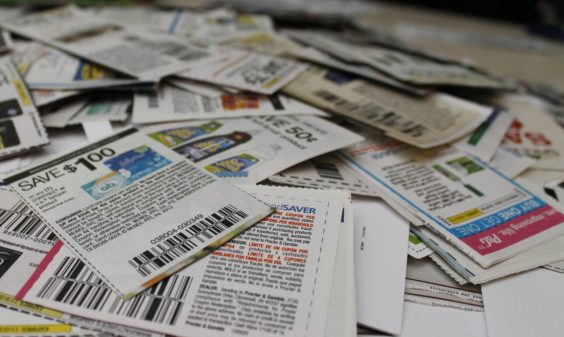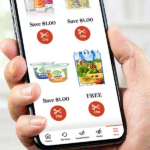
If you’ve ever complained that coupons just aren’t as good as they used to be, brace yourself for some good news for a change – coupons are actually getting just a bit better.
According to Inmar’s Mid-Year Promotion Industry Analysis, the coupon redemption rate – which hit a 40-year low last year – is no longer in free fall. And it may have much to do with the fact that there are finally more, and more attractive, coupons for things you can actually feed your family.
Finally, no more free-after-coupons toothpaste for dinner!
Food coupons, plainly speaking, have been pretty lousy lately. Values have been declining, while the number of products you need to buy in order to use a coupon, keep rising. And despite shoppers’ overwhelming preference for food coupons, the vast majority of coupons available are for nonfood items.
But all of that is starting to change.
Inmar’s analysis shows that food coupons are getting better. While their face values are still declining, that decline has slowed significantly. The average face value has dropped by just two cents this year, to $1.13, while nonfood coupons’ value has plunged by 16 cents, to $1.96 – still a high value, since nonfood items are more expensive, but not as high as it has been.
You also have to buy more items in order to use nonfood coupons these days. The average purchase requirement for nonfood coupons soared by 11%, to 1.43 items, while food coupons’ purchase requirement held steady at 1.49 items.
And not only are food coupons improving, but there are more of them. After years of decline, 36.3% of all coupons distributed so far this year have been for food items, up from 34.3% this time last year. And shoppers responded in kind – 63.5% of all coupons redeemed were for food items, up a percentage point from the first half of 2015.
All of these figures have helped the still-declining coupon redemption rate to decline a lot less rapidly than it has been. Altogether, 1.2 billion coupons have been redeemed so far this year. That’s down 4.4% from this time last year. But even a 4.4% decline, is an improvement. Last year’s coupon redemption rate dropped by an alarming 13%, resulting in the fewest number of coupons redeemed since way back in 1976.
So as food coupons improve, we’re using more coupons overall. A coincidence, or a correlation? If you’ve ever paged through a coupon insert filled with offers for medicine, makeup and cleaning supplies – and then tossed it – you can probably make the connection that the coupon redemption rate is probably getting better, because the coupons themselves are getting better. Shoppers want coupons for food – and they’re getting them.
And some of the best coupons, somewhat surprisingly, are internet printables. Written off as near-dead not too long ago, printables appear to be making something of a comeback. They’re among the most valuable coupons available, with an average face value of $1.75. That’s higher than Sunday coupon inserts’ $1.67, and much higher than digital load-to-card coupons’ average value of just $1.28. Printables also have some of the longest expiration dates among all types of coupons.
And as a result, we’re printing and using more of them. Printables now represent 4% of all coupons redeemed, up a full percentage point from this time last year, while the old stalwart Sunday insert coupons account for 36%, down from 40.5%.
So it appears to be a case of giving the people what they want, and then not having reason to be particularly surprised when they respond. As the coupons that shoppers crave become more plentiful, and valuable, we’re starting to use more of them. Coupon use may never again reach the heights of the extreme couponing era. But as long as couponing bounces back from last year’s alarming low point, there may well be a day when you find yourself saying that coupons actually are as good as they used to be.











Maybe because you don’t have to install special coupon printing software people are willing to use internet coupons.